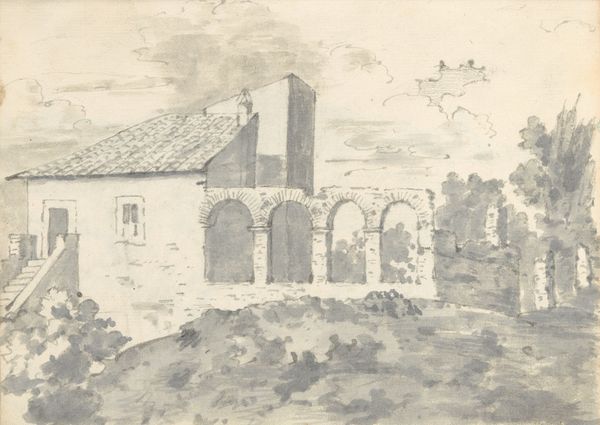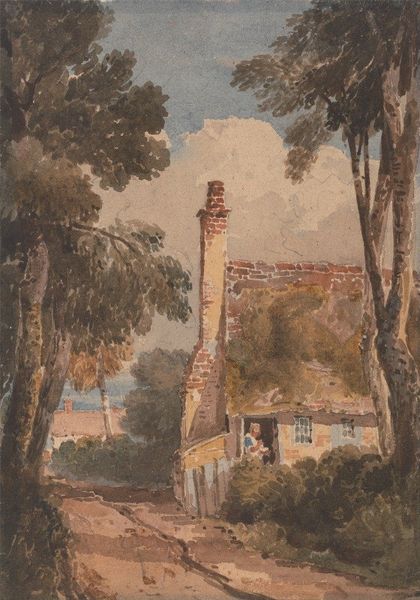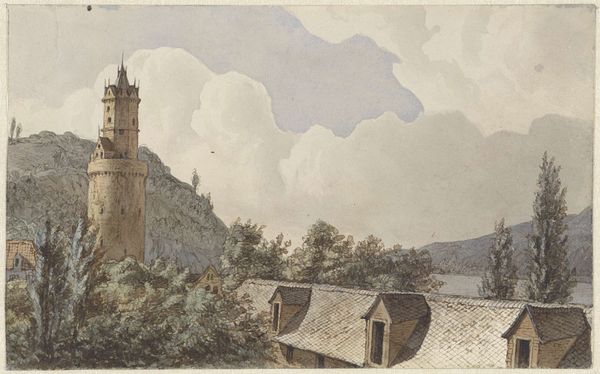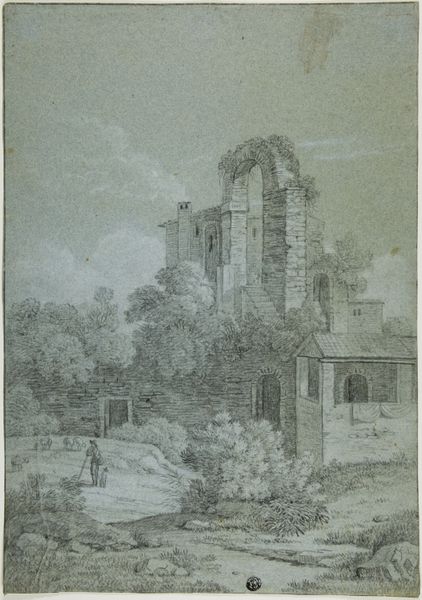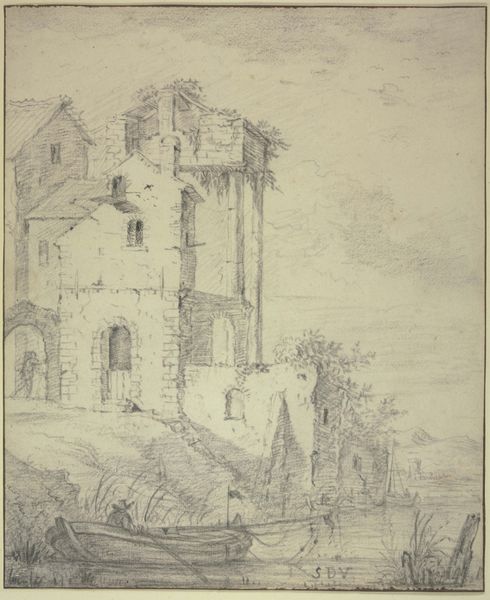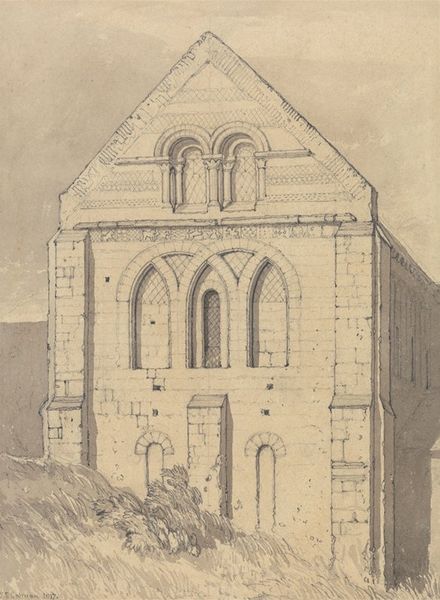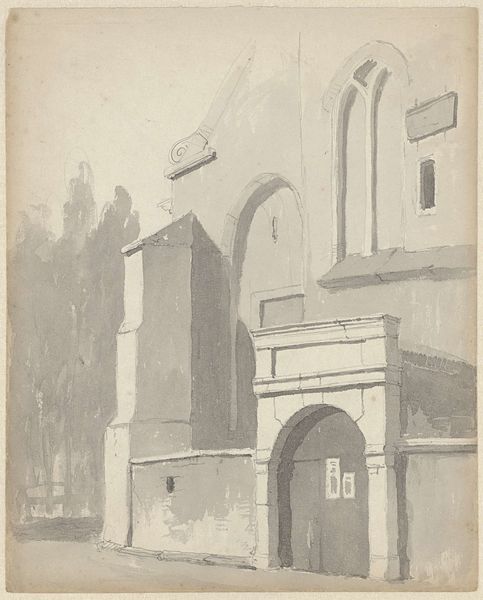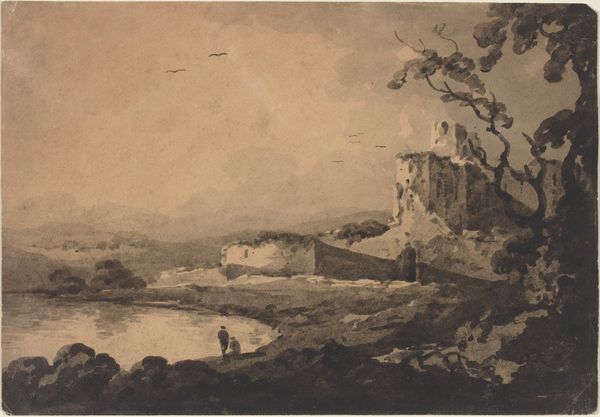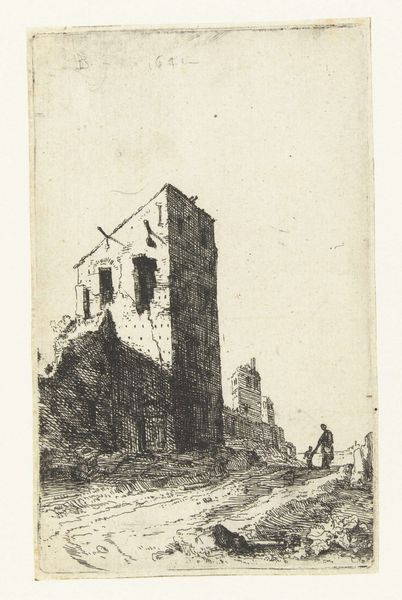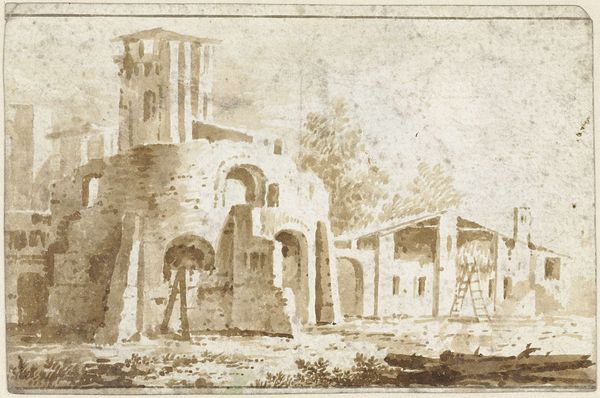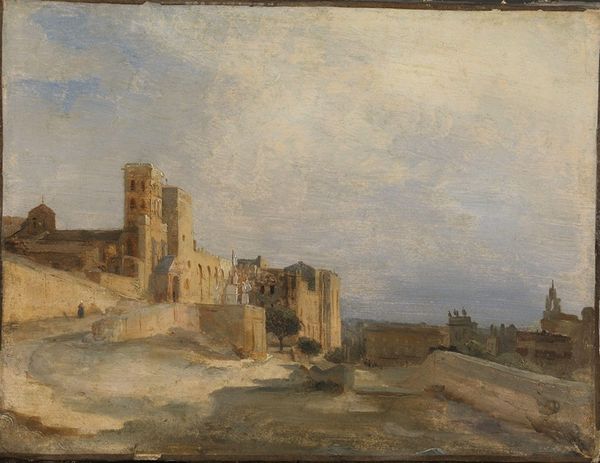
watercolor
#
medieval
#
landscape
#
form
#
watercolor
#
romanticism
#
line
#
watercolor
#
realism
Copyright: Public Domain: Artvee
Curator: Here we have John Sell Cotman’s "Sheriff Hutton Castle, Yorkshire," a watercolor created around 1808. What strikes you first about it? Art Historian: The overall effect is melancholy, wouldn't you say? The ruined castle against that vast sky—it speaks of lost power, of the transience of human endeavor. It's like a stage set for a gothic novel. Curator: Indeed. And consider Cotman’s method: the deliberate layering of washes to achieve precise tonal contrasts. It shows a real craftsman’s commitment to process. Look closely; he wasn't merely recording a scene, he was actively constructing it, manipulating the watercolor to emphasize geometric shapes, even within the ruins themselves. Art Historian: Absolutely. These aren't just arbitrary ruins. Castles always represented more than defense; they were symbols of feudal power, social hierarchy. Now, crumbling, they speak volumes about changing social orders and the relentless march of time. Don't you see a warning against hubris in such a decaying monument? Curator: I see changing material conditions. It wasn't divine retribution that crumbled those walls, but the realities of neglect, resource depletion, and changing economic forces rendering them obsolete. The nearby modern thatch roof only amplifies that change! How does new life use the past to house itself today? That says more about our culture and choices than romanticism might allow. Art Historian: Well, history always becomes the stories we tell ourselves, doesn't it? The stark lines remind me of Piranesi's etchings—a kind of artistic "excavation" that reveals not only literal ruins, but also psychological ones. Curator: Agreed, except the method differs and the symbolism, too. Here we see romanticism attempting realism. Rather than a grand allegory about empires, it invites reflection on the slow violence neglect wreaks on stone over time. Notice how, by embracing stark, flat planes of color, Cotman achieves an almost architectural rendering of decay. That itself could be a metaphor for understanding social architecture! Art Historian: A valid point, truly. It's powerful how a relatively simple watercolor technique evokes such somber yet intriguing reflections. Curator: Absolutely. Studying Cotman’s landscape has made me consider what we choose to preserve, and what materials and means decide our future. Art Historian: Yes. It leaves me pondering about the symbolic weight that ruins bear and how we choose to read their narratives over the ages.
Comments
No comments
Be the first to comment and join the conversation on the ultimate creative platform.

